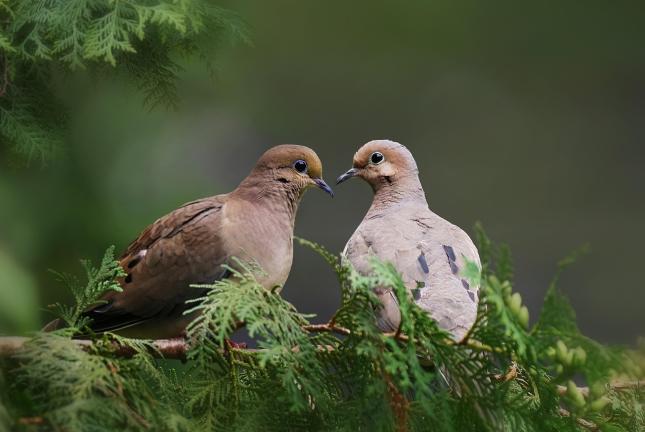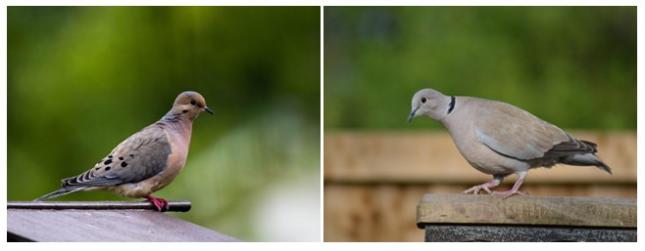Bird of the Month - Mourning Dove
As February brings thoughts of love and companionship, there’s no better bird to spotlight than the Mourning Dove. With their soft, mournful cooing and peaceful presence, these gentle birds embody devotion and tranquility. Often seen in pairs, Mourning Doves symbolize love and fidelity, making them a fitting choice for Valentine’s Day. Their graceful demeanor and deep bonds remind us of the quiet, enduring nature of true companionship.

Mourning Doves are known for their strong pair bonds, often mating for life. During courtship, the male performs elegant aerial displays, soaring upward before gliding down in a wide arc with his wings whistling in the wind. On the ground, he approaches his mate with gentle cooing, bowing and puffing out his chest in a tender display of affection.
Once paired, Mourning Doves work together to build a nest, typically in trees, shrubs, or even ledges near homes. Their nests, made from loosely arranged twigs and grasses, may appear flimsy but are surprisingly effective. These adaptable birds thrive in a wide range of habitats, from open grasslands and woodlands to urban and suburban settings.
Each clutch usually consists of two small, white eggs, which hatch after about two weeks. Both parents share the responsibility of incubating the eggs—males during the day and females at night. Once hatched, the young, called squabs, are fed “crop milk,” a nutrient-rich secretion produced by both parents. This unique food source helps the chicks grow quickly, preparing them to fledge in just a couple of weeks.
Mourning Doves are among the most prolific breeders in North America, capable of raising up to six broods a year in warmer climates. Their resilience and adaptability ensure their continued presence across a variety of landscapes, from the countryside to city parks and backyards.
A Growing Challenge: Competition from Eurasian Collared-Doves
Despite their widespread presence, Mourning Doves face increasing competition from the non-native Eurasian Collared-Dove, commonly referred to as the Ring-Necked Dove. Introduced to North America in the late 20th century, these larger, more aggressive doves have expanded rapidly, often outcompeting Mourning Doves for food and nesting sites.
How to Tell Them Apart:

Mourning Dove (left): Smaller and more slender with a pointed tail edged in white. Their soft, sorrowful cooing is distinctive and often associated with peaceful settings.
Eurasian Collared-Dove (right): Larger and bulkier with a squared-off tail and a noticeable black “collar” around the back of the neck. Their call is louder, more repetitive, and often described as “coo-COO-coo.”
While Eurasian Collared-Doves are here to stay, backyard bird lovers can help Mourning Doves thrive by ensuring they have ample food and space at their feeders.
Mourning Doves are ground feeders by nature, preferring flat surfaces for foraging. To invite them into your yard provide the right food - white millet, black-oil sunflower seeds, and safflower are favorites. Scatter seeds on the ground or use platform feeders to accommodate their feeding habits. Doves are frequent drinkers, so offer a clean shallow water source to quench that thirst! Place feeders and water in open areas where doves feel secure from sudden predator attacks.

